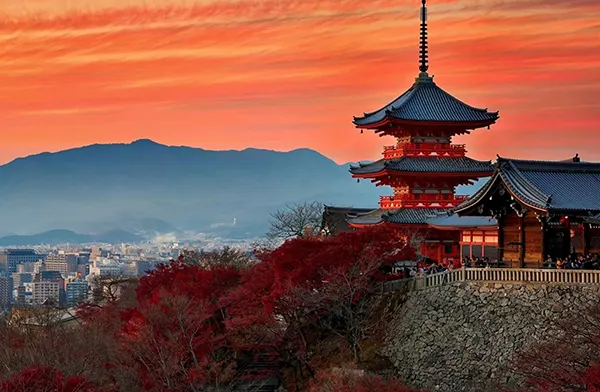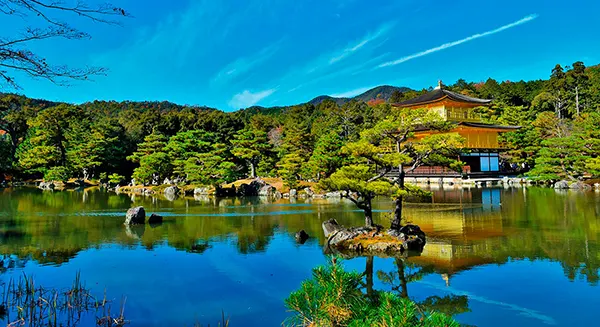
Kyoto: Japanese Minimalism, Tea Ceremonies, and Zen Gardens
Kyoto stands apart as Japan’s heart of tradition. Far from the neon bustle of Tokyo, this ancient capital invites those who seek calm, simplicity and a deep connection with the country’s cultural roots. In this guide, we focus on real experiences — not postcard clichés — to understand what makes Kyoto a centre of mindful beauty.
Living Tradition: Tea Houses and the Way of Tea
Tea in Kyoto is more than a drink — it is a ceremony, a philosophy, and a practice of stillness. Many tea houses, including some that open their doors to foreign visitors, preserve centuries-old customs of the Japanese tea ceremony, or chanoyu. Every detail — from the placement of utensils to the movement of the host — is part of a refined choreography born from Zen teachings.
Unlike commercialised venues, Kyoto’s authentic tea houses such as Camellia Flower Teahouse or En Tea Experience offer genuine introductions to the art form. These are not shows; they are shared moments of focus and respect. Tourists are gently guided through the ritual, often in traditional machiya-style houses.
The experience is intimate, usually with a small group, where silence is as valued as explanation. Beyond sipping matcha, one learns to appreciate textures, sounds, and the passage of time — principles central to Japanese minimalism and spiritual life.
The Role of Wabi-Sabi in the Tea Experience
Integral to the tea ceremony is the concept of wabi-sabi — a worldview that embraces imperfection, impermanence, and simplicity. In Kyoto’s tea rooms, this principle lives in the rough surfaces of handmade ceramics, the uneven grain of a bamboo whisk, and the aged patina of wood.
This aesthetic is not a trend; it is a lens through which many Japanese see beauty. Tea ceremonies in Kyoto offer an entry point into this vision, where quiet moments become meaningful and understated elegance is celebrated. Visitors often leave with a changed pace of mind — slower, more attentive, more reflective.
Unlike decorative rituals, the tea ceremony is functional and transformative. It reveals the subtle richness of ordinary moments, encouraging a retreat from noise into the clarity of mindful presence.
Zen Gardens and the Art of Stillness
Kyoto is home to some of the most iconic Zen gardens in Japan, with Ryoan-ji Temple being among the most visited and studied. Built in the late 15th century, its dry landscape (kare-sansui) garden consists of carefully arranged rocks in a bed of white gravel. Yet its power lies not in complexity but in what it allows the observer to perceive.
Unlike western gardens, there are no flowers or greenery to distract the eye. The garden offers a space for contemplation — not of what is, but of what might be. The layout of the stones is such that one can never see all fifteen at once, regardless of the viewing angle. This mystery, intentional or not, becomes a quiet lesson in perspective and the limits of perception.
Visiting Ryoan-ji is not about taking photos but about sitting still. Many visitors report an almost meditative state emerging while watching the gravel raked into lines, disturbed only by the wind or a birdcall. It’s a scene that invites one to let go of thoughts and simply be present.
Kyoto’s Other Gardens of Quiet
While Ryoan-ji may be the most famous, Kyoto is rich with smaller, often overlooked Zen gardens. The gardens of Daitoku-ji, for example, offer solitude and depth without the crowds. Each sub-temple within its compound has its own design, some more minimal than others, but all rooted in the same principles of balance and void.
Shisen-dō in the northern Higashiyama hills combines a small Zen garden with a simple temple structure that looks out on maple trees and moss. Seasonal changes are central to its experience: the vibrant green of early summer, the reds of autumn, or the quiet snow cover of winter each reshape the garden’s meaning.
These spaces teach patience and non-intervention. No interactive displays, no signage urging selfies — just stones, sand, and silence. They serve not as destinations but as intervals of quiet within a traveller’s path through Kyoto.

Staying in a Ryokan: More than a Place to Sleep
To understand Kyoto’s spirit, one must live it — and that begins with where you sleep. A stay in a traditional Japanese inn, or ryokan, offers an immersion into local life. These are not just accommodations; they are curated environments where everything, from tatami floors to futon beds, follows centuries-old design.
Ryokans differ from hotels in ethos. They prioritise harmony, hospitality (omotenashi), and natural aesthetics. Often family-run, many ryokans in Kyoto date back generations and maintain strong links to local artisans who provide furniture, textiles, and ceramics.
Meals, typically kaiseki-style, are multi-course and served in-room. They reflect seasonal ingredients and regional flavours, prepared with an attention to detail that mirrors the philosophy found in tea ceremonies and Zen gardens. To stay in a ryokan is to observe a different pace of life — one that values stillness and presence.
Recommendations for Authentic Ryokan Stays
For those seeking authenticity, Gion Hatanaka and Hiiragiya Ryokan offer refined yet sincere experiences. Gion Hatanaka, located near Yasaka Shrine, maintains a strong cultural link with geiko (Kyoto geisha), occasionally offering traditional performances during dinner.
Hiiragiya, in operation since 1818, is famed for its understated elegance and for having hosted literary and political figures throughout its history. The rooms are meticulously maintained, with modern comfort discreetly hidden behind shoji screens and lacquered woodwork.
Booking a ryokan is best done in advance, and it is important to understand etiquette before arriving. Guests are expected to remove shoes, observe quiet hours, and respect the rhythm of the household. But in return, they receive not only rest, but a lesson in Japanese aesthetics and values.
Popular articles
-
 Depression Danakil: Ethiopia’s Fierce and Haunting Landscape
Depression Danakil: Ethiopia’s Fierce and Haunting LandscapeThe Danakil Depression in Ethiopia is often described as one …
-
 Coimbra, Portugal — A Student City Shaped by Centuries of Academic Tra...
Coimbra, Portugal — A Student City Shaped by Centuries of Academic Tra...Coimbra stands as one of Portugal’s most influential cultural and …
-
 Big Ben and the Elizabeth Tower in London: History, Restoration, and V...
Big Ben and the Elizabeth Tower in London: History, Restoration, and V...Few landmarks define London’s identity as powerfully as Big Ben …
